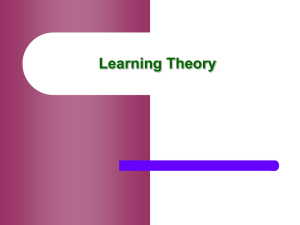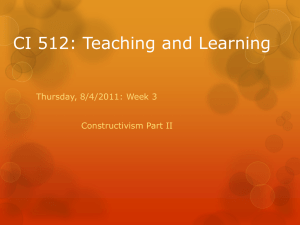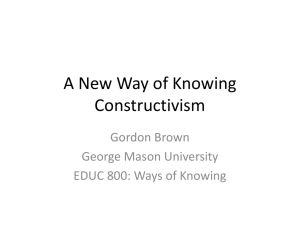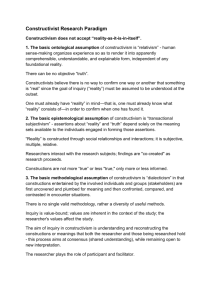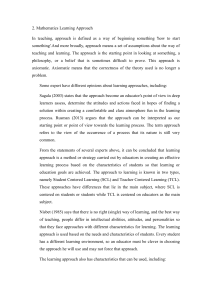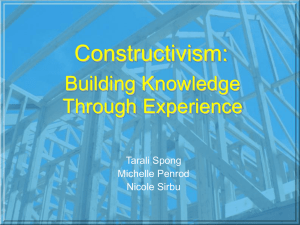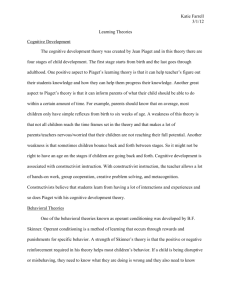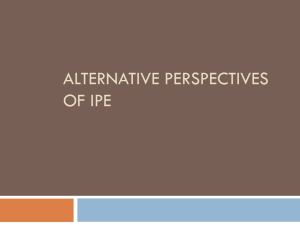Constructivism and teaching-R - Tdi
advertisement
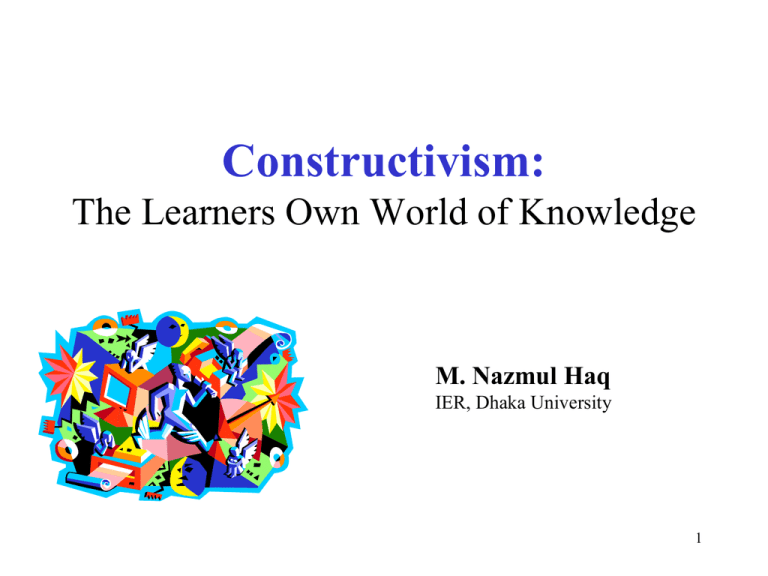
Constructivism: The Learners Own World of Knowledge M. Nazmul Haq IER, Dhaka University 1 What do you see in the following picture ? 2 Some people 'see' : A geographical location. The side of a cow. A bearded man. Apparently, what each person 'sees' depends more on what is already stored in that person's brain. That is people construct his/her own image. 3 Each of us views the world in ways like no other person does 'I am apart of all of whom I have met' (Tennyson) 4 CONSTRUCTIVISM: A MODEL FOR LEARNING What does this mean for a classroom teacher ? Constructivist learning environment is one-to-one initiatives. According to this theory, the manner in which students acquire and process information is fundamental to their learning. Individuals "construct" meaning from the world around them. 5 What it looks like • It is a flexible classroom environment engaging students in active learning. • The role of teacher is to create active environment. • The teacher is no longer the "sage on stage" but is "guide on the side." 6 • Students learn content by building it themselves. • The teacher provides stimulation and asks questions. • Students are encouraged to come to their own conclusions. 7 Students remember 90% of what they say and do, but remember only 20% of what teachers say. •So let students seek information, form opinions, make decisions, and apply concepts to new situations. •Active involvement and critical thinking is the key to constructivism. 8 FIVE PRINCIPLES OF CONSTRUCTIVISM 1. Create problems which has value to students 2. Structure learning around primary concepts 3. Seek and value student’s points of views 4. Adapt curriculum to address student’s suppositions 5. Assess learning in the context of teaching 9 Difference between traditional and constructive class • Traditional • Constructive • Emphasizes big • Emphasizes basic concepts skills. • Pursuit of student • Strict adherence to questions and interests fixed curriculum is valued. • Materials are primarily • Include primary textbooks and sources and workbooks. manipulative • Learning is based on materials. repetition. 10 Difference between traditional and constructive classes (cont.) • Traditional • Teachers disseminate information to students. • Teacher's role is directive, rooted in authority. • Assessment is through testing, correct answers. • Constructive • Learning is interactive, based on previous knowledge. • Teachers help students construct their own knowledge. • Teacher's role is interactive, rooted in negotiation. • Assessment includes student works, observations, and points of view, as well as tests. Process is as important as product. 11 •Students are not blank slates. •They come with already formulated knowledge, ideas, and understandings. •This previous knowledge is the raw material for the new knowledge they create. 12 The teacher coaches, moderates and suggests, but keeps room for experiment. Learning activities require the students' full participation. 13 The main activity in a constructivist classroom is solving problems. Students use inquiry methods, ask questions, investigate a topic, and use a variety of resources. As students explore the topic, they draw conclusions, and revisit those conclusions if needed. 14 Students have ideas that they may later see were invalid, incorrect, or insufficient to explain new experiences. For instance, a child may believe that all trees lose their leaves in the fall, until she visits an evergreen forest. Constructivist teaching takes into account students' current conceptions and builds from there. 15 To be constructive ask the following: •Am I asking for students' understanding before giving my own answers? •Are there opportunities for dialogue about the concept? •Am I asking open-ended questions? •Am I allowing sufficient time after asking questions? •Am I allowing enough time for students to work with the concept(s)? •Am I providing chances to students for use their natural curiosity? 16 CONCLUSION Constructivism is a mind set, helping teachers to create lesson plans based on student learning to create problem solvers. Instructors must be constantly student centered, focusing on which strategies are best to teach this particular group of students. 17 18



